Wrong compost, typical mistakes
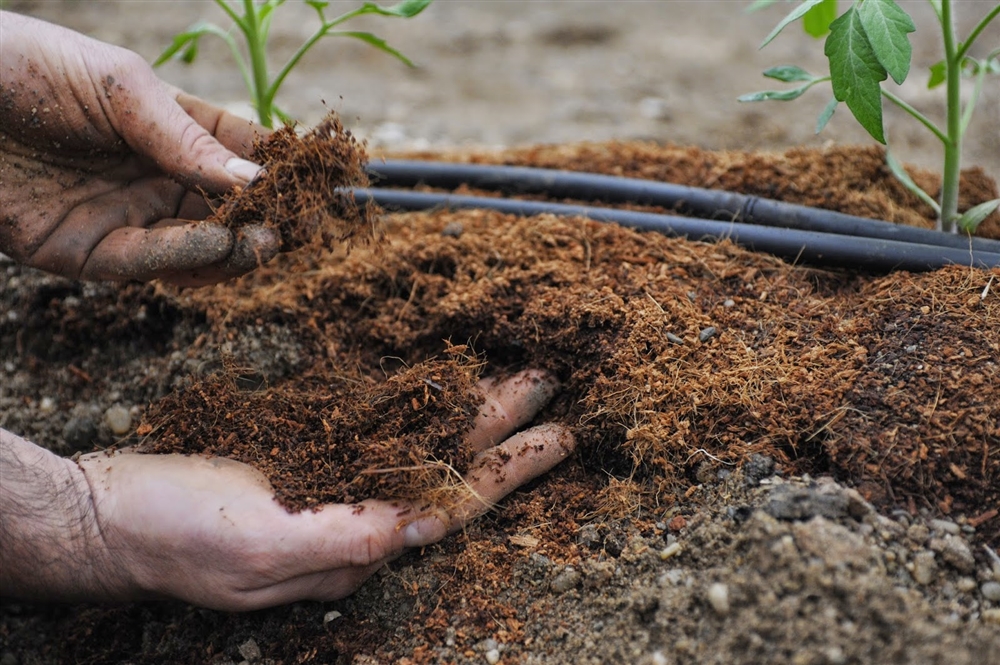
To get strong bushes of tomatoes and a rich harvest, it is advised to use compost. This is a natural fertilizer that even an inexperienced summer resident can prepare.
Beneficial features
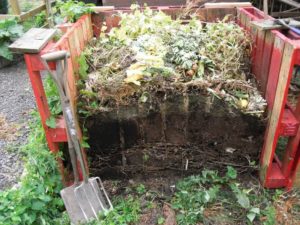 Organic fertilizers nourish the root system of plants, stimulate growth and yield. Among their advantages:
Organic fertilizers nourish the root system of plants, stimulate growth and yield. Among their advantages:
- soil improvement due to beneficial minerals;
- yield increase;
- strengthening plant immunity;
- increase the resistance and endurance of tomatoes;
- simple principle of manufacturing fertilizer.
When heated in a natural way, the pathogenic microorganisms and the larvae of pests are neutralized in the compost substrate.
Compost is rich in nutrients. Among them: phosphorus, nitrogen and potassium. They are important for the proper growth of tomatoes, abundant fruiting.
The soil, which is fertilized with organic matter, retains nutrients in the next season. Tomatoes on it grow strong and tolerate adverse weather conditions.
Composition
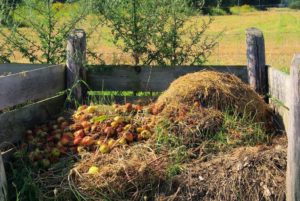 Organic fertilizers can be divided into two groups, depending on the components.
Organic fertilizers can be divided into two groups, depending on the components.
- Nitrogen or green. They stimulate the processes of decay due to heat.
- Carbon or brown. The decay process is slower, while the heat is minimal. Their task is to ensure soil looseness and moisture retention.
Nitrogen well nourish the soil, saturate it with nutrients. Carbon make the soil more friable, eliminating the stagnation of water.
Components of green compost can be:
- green grass;
- fruit and vegetable waste;
- food production waste;
- rotted manure;
- seedless weeds;
- seaweed;
- chicken droppings;
- stems and buds of flowers.
Meat waste can not be added to the pit. Decomposing, they emit a strong odor. It attracts flies and rodents.
The components of carbon compote are:
- dry foliage;
- hay;
- eggshell;
- sawdust;
- wood ash;
- waste paper, with the exception of cardboard and gloss.
Small amounts of pine needles are added to brown compost. Its surplus may adversely affect the quality of fertilizer, so you need to comply with the measure.
How to make a compost pit for tomatoes
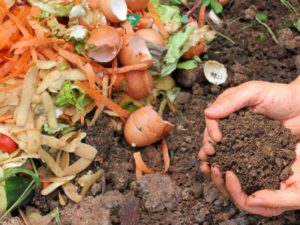 The place for the compost pit is opaque. For example, the far corner of the garden, the crown of a tall tree.
The place for the compost pit is opaque. For example, the far corner of the garden, the crown of a tall tree.
The construction is a wooden box without a bottom. He allows to mix contents with ease, does not allow to stand to moisture and provides good air circulation.
For its manufacture need boards. Best of all - pine, they are durable. Between the boards leave small gaps for free access of oxygen. The optimal size of the structure is 1.5x1.5 meters. The height must be at least a meter.
To prevent the leaching of nutrients from the pit during the rainy season, you need to provide a cover. Instead, you can use slate or thick film. And the sliding section in the lower part of the box will allow you to easily get ready-made humus.
Composting fertilizer takes at least three months to mature. In some cases, the term is extended to two years. The finished humus can be distinguished by its characteristic features: dark brown color, earthy smell, homogeneous crumbly structure.
Compost heap formation
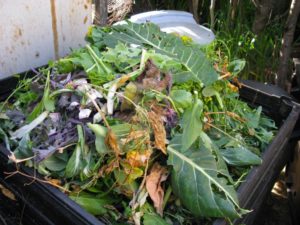 The process involves several steps:
The process involves several steps:
- Formation of drainage. The first layer consists of thin twigs, peat and dry grass. Its height should not be less than 15 cm.
- Brown layer. Fertilizer compacted, plentifully watered. The second layer is 20 cm.
- Green layer. Its height is 20 cm. Repeat copious watering.
- The earth layer is 5-10 cm high. It consists of fertile soil.
- Further, the stacking of the components is repeated until the box is full.
- When the compost has settled, add new layers of fertilizer and soil.
- Twice a month, the contents of the pit shovel. Thus, create additional air flow.
- In the fall, the pit is covered with a thick layer of sawdust or foliage. Top compost is covered with plastic film.
To speed up the process of maturation of compost, exclude the earth layer. The pit is covered with plastic wrap. The compost mixture is often and abundantly watered with a catalyst, mixed. This method allows you to get fertilizer in 2-3 months.
What components should not be put into compost for tomatoes
When forming a compost heap, the following components are excluded:
- weed plants;
- peel of bananas and oranges;
- meat waste;
- potato and tomato tops;
- nutshell, fruit pits;
- coal ash;
- fresh manure;
- waste milk production;
- diseased plants;
- animal hair and faeces;
- bones.
Do not add plants treated with pesticides to the pit. Organic fertilizer is natural, chemicals will lower the quality and nutritional value of the compost.
Conclusion
Compost helps to grow strong and healthy tomatoes. It prevents the growth of weed plants, eliminates the drying of the upper layer of soil. With the help of affordable organic fertilizer get a rich crop, regardless of weather conditions.

